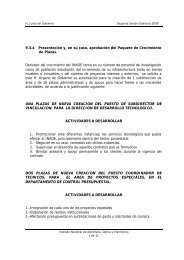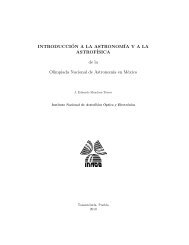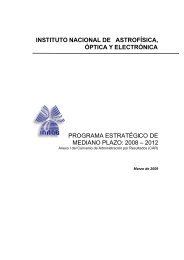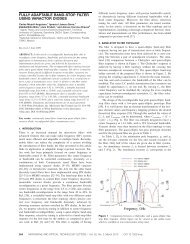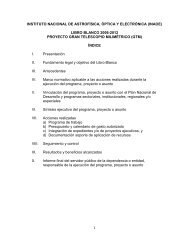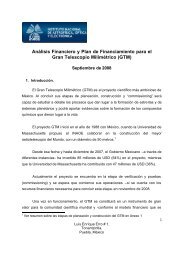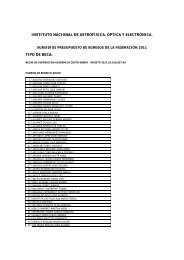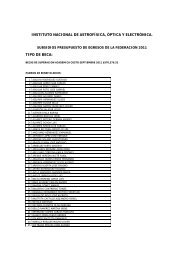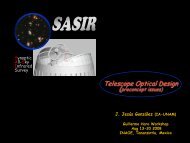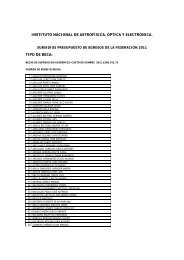Measurement of the stellar irradiance f - inaoe
Measurement of the stellar irradiance f - inaoe
Measurement of the stellar irradiance f - inaoe
You also want an ePaper? Increase the reach of your titles
YUMPU automatically turns print PDFs into web optimized ePapers that Google loves.
Energy received at Earth : (<strong>stellar</strong> brightness, <strong>stellar</strong> <strong>irradiance</strong>) (monochromatic)<br />
R : radius <strong>of</strong> <strong>the</strong> spherical star, D distance to <strong>the</strong> star<br />
f º<br />
=<br />
units :<br />
monochromatic <strong>stellar</strong> <strong>irradiance</strong> not observed directly but from observations<br />
made with finite spectral bands :<br />
monochromatic magnitude :<br />
+ constant<br />
+ constant<br />
In fact one measures E m<br />
i<br />
(λ) : an heterochromatic magnitude through <strong>the</strong> filter i<br />
m i<br />
(λ) = m 0<br />
i<br />
– 2.5 log E m<br />
i<br />
(λ)<br />
m 0<br />
i<br />
is an arbritary constant (zero point <strong>of</strong> <strong>the</strong> magnitude scale through <strong>the</strong> filter i ).<br />
For <strong>the</strong> UBV system <strong>the</strong> zero points were defined as such : for an A0V type star all<br />
<strong>the</strong> color indices equal 0 and V=0 for Vega.



